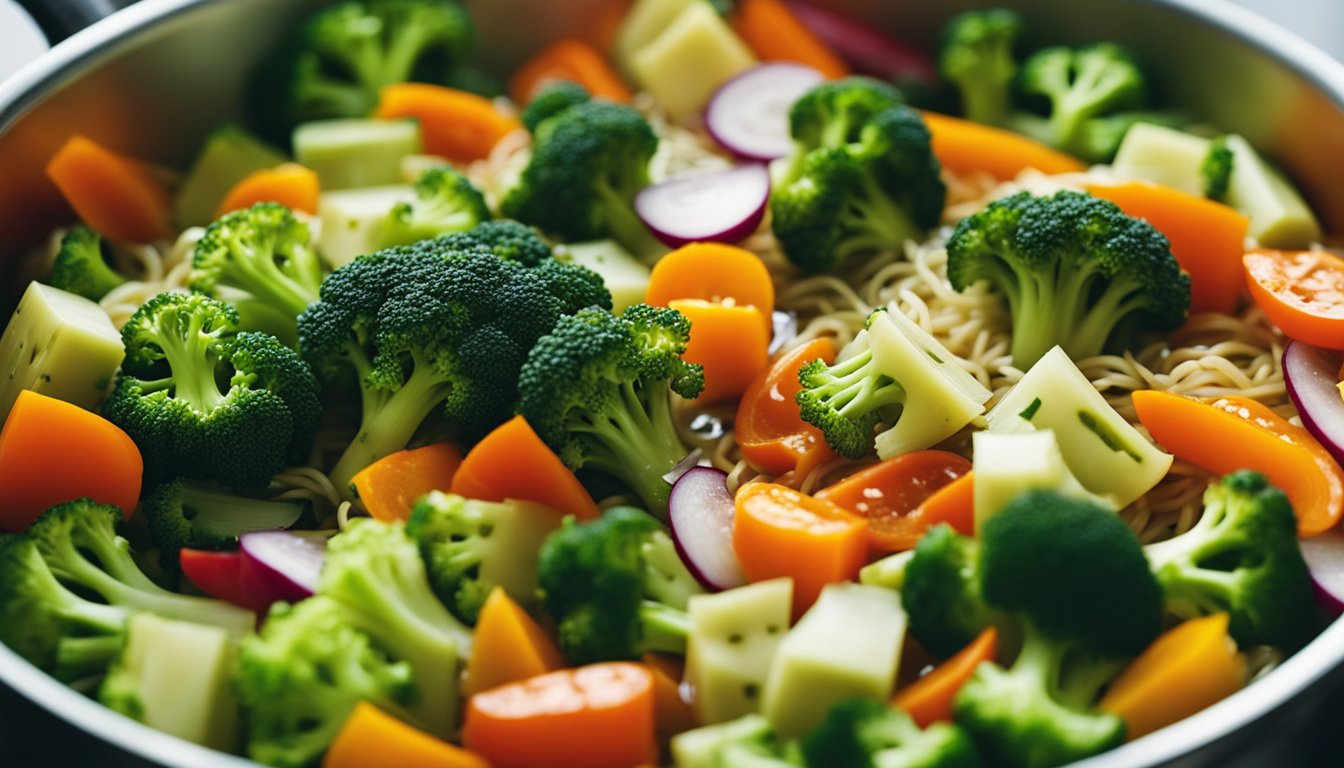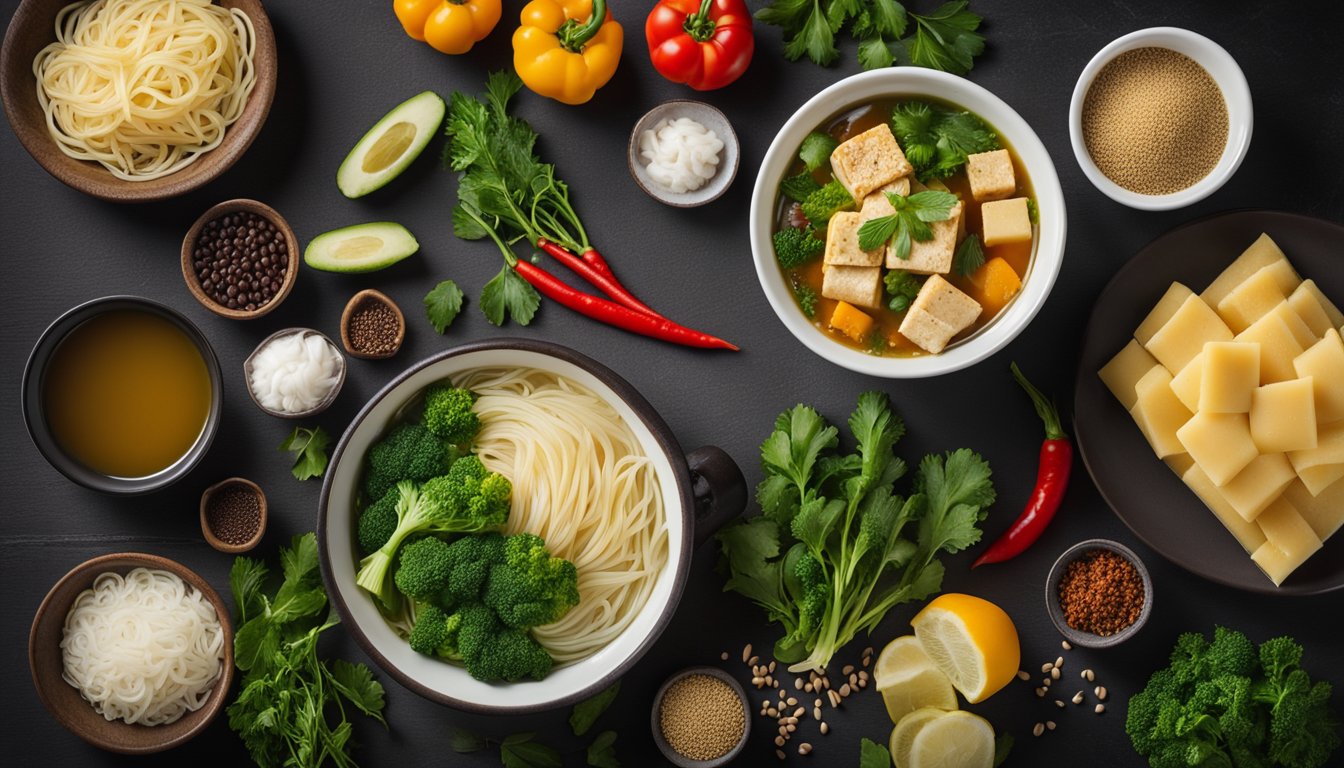Healthy Ramen Recipes
Ramen noodles have become a staple in many households due to their convenience and affordability. However, they are often associated with being unhealthy due to their high sodium content and lack of nutritional value. But what if we told you that you could enjoy ramen noodles in a healthier way? That’s right, we’re talking about healthy ramen recipes.

With a little creativity and some simple substitutions, you can transform your regular ramen noodles into a nutritious and delicious meal. By adding fresh vegetables, lean protein, and healthy fats, you can boost the nutritional value of your ramen bowl. Not only will this make your meal more satisfying, but it will also provide your body with the essential nutrients it needs to function properly.
In this article, we will share some of our favorite healthy ramen recipes that are easy to make and packed with nutrition. We will also discuss the health benefits of incorporating these ingredients into your diet and why it’s important to be mindful of the nutritional value of the foods we eat. So, whether you’re a ramen lover looking to switch up your routine or someone who wants to enjoy a quick and healthy meal, we’ve got you covered.
Essentials of Healthy Ramen
When it comes to healthy ramen, there are a few key factors to keep in mind. In this section, we’ll cover the essentials of healthy ramen, including choosing the right noodles, low-sodium broth options, and incorporating proteins.
Choosing the Right Noodles
The type of noodles you choose can make a big difference in the healthiness of your ramen. Look for noodles made from whole grains, such as brown rice or buckwheat, as these provide more fiber and nutrients than traditional wheat noodles. For those who are gluten-free, there are also options made from rice, sweet potato, or mung bean starch.
Low-Sodium Broth Options
Traditional ramen broth can be high in sodium, so it’s important to choose low-sodium options when possible. Look for chicken or vegetable stock that is labeled as low-sodium, or make your own broth using low-sodium miso paste and vegetable oil. Another option is to use a pre-made broth concentrate, such as ImmI Ramen’s low-sodium broth concentrate.
Incorporating Proteins
Adding protein to your ramen can make it a more satisfying and filling meal. For vegetarians and vegans, tofu or tempeh are great options, while chicken or shrimp can be added for those who eat meat. Plant-based protein sources, such as edamame or chickpeas, are also great additions to ramen.
By keeping these essentials in mind, you can create a healthy and satisfying bowl of ramen that fits your dietary needs and preferences.
Vegetable Add-Ins for Nutrition and Flavor

When it comes to creating healthy ramen recipes, adding vegetables is a great way to boost the nutrition and flavor of your dish. Here are some of our favorite vegetable add-ins:
Seasonal Vegetable Selection
Choosing seasonal vegetables is a great way to ensure that your ramen is packed with flavor and nutrition. In the spring, consider adding some thinly sliced carrots and green onions to your ramen. In the summer, try adding some zucchini and cherry tomatoes. In the fall, mushrooms and broccoli are great choices, while in the winter, kale and bell peppers can add some much-needed color and nutrition to your dish.
Boosting Flavor with Aromatics
Aromatics such as onion, garlic, and ginger can add depth and complexity to your ramen broth. Try sautéing some finely chopped onion and garlic in a little bit of oil before adding your broth. You can also add some grated ginger for a spicy kick. Shiitake mushrooms are another great way to add flavor to your ramen broth.
In addition to these vegetable add-ins, don’t be afraid to experiment with other vegetables such as spinach and cilantro. With a little bit of creativity, you can create a healthy and delicious ramen dish that is sure to satisfy.
Customizing Your Ramen Bowl
When it comes to ramen, there are endless possibilities for customizing your bowl to your liking. Here are some ideas for toppings and extras, as well as special dietary considerations to keep in mind.
Toppings and Extras
- Eggs: Soft-boiled or poached eggs are a classic addition to ramen. You can also try marinating them in soy sauce or vinegar for added flavor.
- Tofu: For a vegetarian or vegan option, try adding cubed tofu to your ramen bowl. Firm tofu holds up well in soup and adds a nice texture.
- Pork: Fatty pork belly is a popular choice for ramen, but you can also use leaner cuts like loin or tenderloin. Try marinating the pork in soy sauce, sake, and mirin before cooking for added flavor.
- Shrimp: If you’re a seafood lover, adding shrimp to your ramen can be a delicious option. Cook them separately and add them to your bowl at the end to prevent overcooking.
- Kimchi: For a spicy and tangy kick, add some kimchi to your ramen bowl. This Korean side dish pairs well with the savory broth and noodles.
Special Dietary Considerations
- Vegan Ramen: For a plant-based option, try using vegetable broth and adding tofu, mushrooms, and other vegetables to your ramen bowl.
- Spicy Beef: If you’re a meat lover, try adding some spicy beef to your ramen bowl. You can use thinly sliced flank steak or sirloin and marinate it in a spicy sauce before cooking.
- Seafood: If you prefer seafood, try making a seafood broth with shrimp shells, crab shells, and fish bones. Add some shrimp, scallops, and mussels to your ramen bowl for a flavorful seafood option.
- Japanese Ramen with Chicken: For a classic Japanese ramen, use chicken broth and add sliced chicken breast or thigh. You can also add some bamboo shoots, nori, and a soft-boiled egg for a traditional touch.
- Vegan Peanut Noodles: For a unique twist on ramen, try making a peanut sauce with peanut butter, soy sauce, rice vinegar, and sriracha. Toss the sauce with cooked ramen noodles and top with chopped peanuts and green onions.
Whether you’re making homemade ramen from scratch or using instant ramen noodles, customizing your bowl is a fun and creative way to enjoy this popular dish.
Preparation and Cooking Tips

Cooking Techniques
When it comes to making healthy ramen recipes, the cooking technique plays a crucial role in achieving the perfect balance of flavors and textures. We recommend using a skillet to sauté your vegetables and proteins before adding them to the soup bowls. This will not only enhance their flavors but also give them a nice crunchy texture.
To make the soup broth, we suggest using low-sodium chicken or vegetable broth instead of the traditional high-sodium ramen seasoning packets. This will reduce the amount of sodium and unhealthy additives in your dish while still providing enough flavor.
In terms of noodles, we recommend using whole-grain or brown rice noodles for added nutrition and fiber. These noodles are also a great gluten-free alternative for those with dietary restrictions.
Serving and Presentation
When it comes to serving and presenting your healthy ramen recipes, there are a few tips to keep in mind. First, make sure to portion out your noodles, vegetables, and proteins evenly among the soup bowls. This will ensure that each serving has a balanced amount of nutrients and flavors.
Next, consider adding some garnishes to your ramen, such as sliced green onions, chopped cilantro, or a sprinkle of sesame seeds. These toppings not only add visual appeal but also provide extra flavor and nutrition.
Finally, don’t forget to snap a photo of your delicious and healthy ramen creations and share them on Instagram using the hashtag #healthyliving. Your followers will be impressed with your culinary skills and may even ask for your recipe!
Overall, by following these preparation and cooking tips, you can create delicious and healthy ramen recipes that are perfect for dinner or lunch. With minimal prep time and customizable servings, this dish is sure to become a favorite in your household. Happy cooking!


